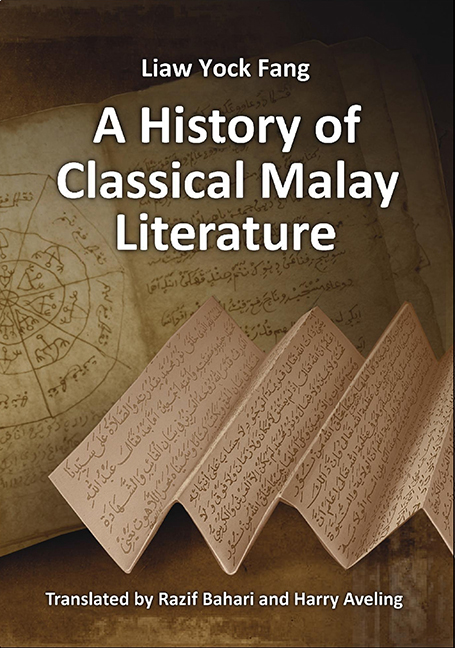Book contents
- Frontmatter
- Contents
- Preface
- List of Abbreviations
- Chapter I Folk Literature
- Chapter II The Indian Epics and The Wayang in Malay Literature
- Chapter III Javanese Panji Stories
- Chapter IV Literature Belonging to the Period of Transition from Hinduism to Islam
- Chapter V Literature of the Islamic Age
- Chapter VI Framed Narratives
- Chapter VII The Literature of Islamic Theology
- Chapter VIII Historical Literature
- Chapter IX Classical Malay Law Codes
- Chapter X Poetic Forms (Pantun and Syair)
- Bibliography
- Index
- Biographical Details
Chapter IX - Classical Malay Law Codes
Published online by Cambridge University Press: 21 October 2015
- Frontmatter
- Contents
- Preface
- List of Abbreviations
- Chapter I Folk Literature
- Chapter II The Indian Epics and The Wayang in Malay Literature
- Chapter III Javanese Panji Stories
- Chapter IV Literature Belonging to the Period of Transition from Hinduism to Islam
- Chapter V Literature of the Islamic Age
- Chapter VI Framed Narratives
- Chapter VII The Literature of Islamic Theology
- Chapter VIII Historical Literature
- Chapter IX Classical Malay Law Codes
- Chapter X Poetic Forms (Pantun and Syair)
- Bibliography
- Index
- Biographical Details
Summary
Classical Malay law codes provide an important resource for the study of traditional Malay governance and administration, as well as the structure of society. That is not all. Legal codes reflect traditional ways of thought. The proverb, “pound rice in a mortar, boil it in an earthenware pot”, suggests that Malays had a fine regard for order. The proverb, “Where the sky touches the earth, the earth upholds the sky; in the land where you live, you must follow local custom”, suggests a willingness and an ability to adapt to current conditions and the vicissitudes of change. For this reason, elements of animism, Hinduism and Islam can exist comfortably side-by-side in Malay culture.
Sir Stamford Raffles was the first person to realize the value of studying classical Malay legal codes. While he was in Penang (1805-1810), he employed four Malay secretaries to collect legal documents. He rejected the contemporary scholarly idea that Malays had no understanding of law, firmly insisting that each kingdom had its own code. The secretaries were to transcribe these codes for his earnest attention. The result of his studies was an article he published in Asiatic Researches (volume 12, 1818).
Even so, there have been scholars who have doubted the relevance of traditional law codes for the actual administration of justice. In one of his articles, R. J. Wilkinson advised students of the law not to bother too much about these codes. He pointed out that Malay law codes had never had the backing of any legal body and were more like “legal digests”; as such, they might suggest what the current practices might be but the laws were not always applied and individuals were not always punished for their faults (Wilkinson 1908). R. O. Winstedt was also of the opinion that these digests were nothing more than reference works; they were often ignored and a strong sultan, or a judge who sought to be on good terms with such a sultan, could easily set their provisions aside (Winstedt 1958: 136).
- Type
- Chapter
- Information
- A History of Classical Malay Literature , pp. 414 - 441Publisher: ISEAS–Yusof Ishak InstitutePrint publication year: 2013

